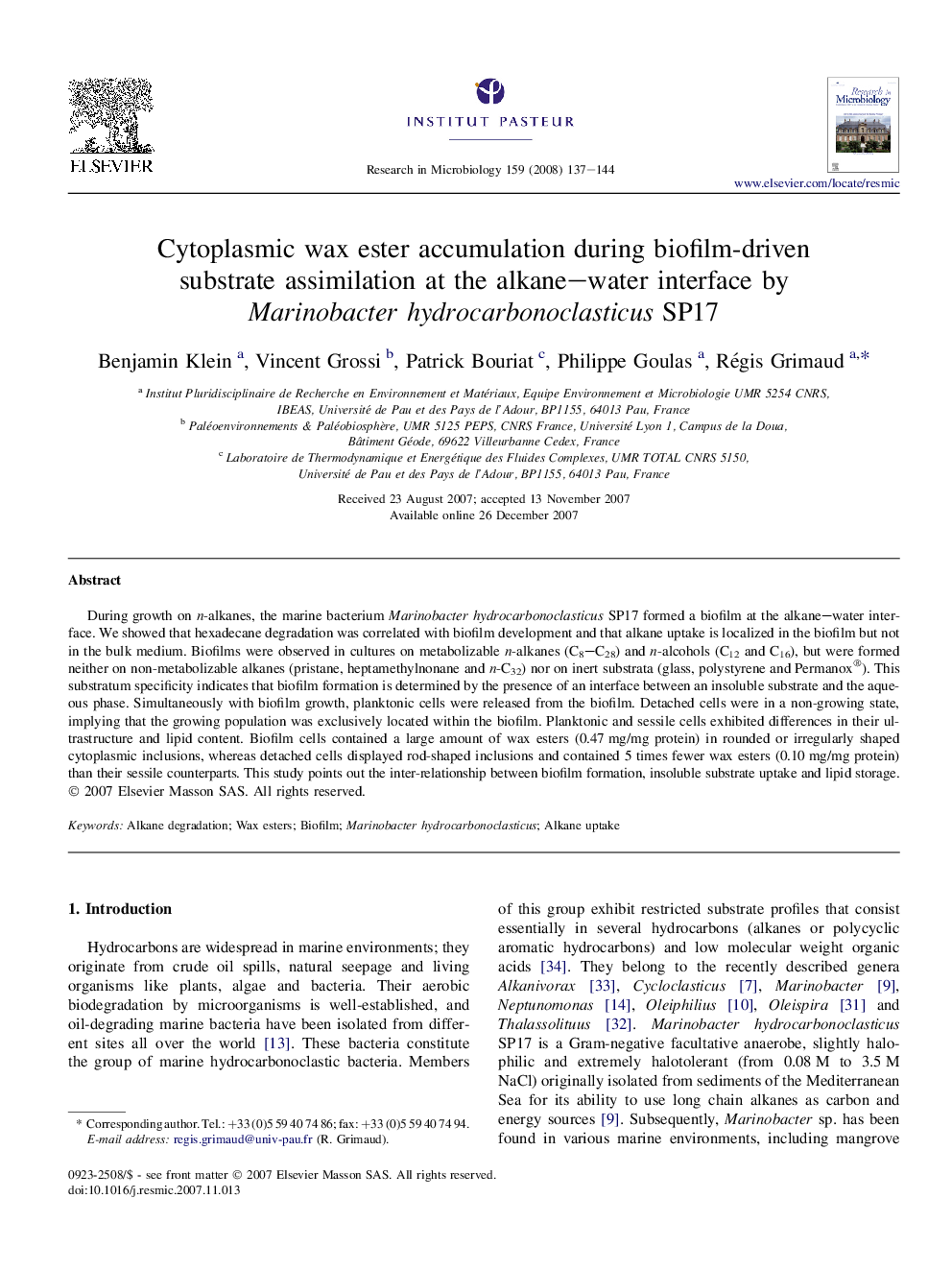| Article ID | Journal | Published Year | Pages | File Type |
|---|---|---|---|---|
| 4359237 | Research in Microbiology | 2008 | 8 Pages |
During growth on n-alkanes, the marine bacterium Marinobacter hydrocarbonoclasticus SP17 formed a biofilm at the alkane–water interface. We showed that hexadecane degradation was correlated with biofilm development and that alkane uptake is localized in the biofilm but not in the bulk medium. Biofilms were observed in cultures on metabolizable n-alkanes (C8–C28) and n-alcohols (C12 and C16), but were formed neither on non-metabolizable alkanes (pristane, heptamethylnonane and n-C32) nor on inert substrata (glass, polystyrene and Permanox®). This substratum specificity indicates that biofilm formation is determined by the presence of an interface between an insoluble substrate and the aqueous phase. Simultaneously with biofilm growth, planktonic cells were released from the biofilm. Detached cells were in a non-growing state, implying that the growing population was exclusively located within the biofilm. Planktonic and sessile cells exhibited differences in their ultrastructure and lipid content. Biofilm cells contained a large amount of wax esters (0.47 mg/mg protein) in rounded or irregularly shaped cytoplasmic inclusions, whereas detached cells displayed rod-shaped inclusions and contained 5 times fewer wax esters (0.10 mg/mg protein) than their sessile counterparts. This study points out the inter-relationship between biofilm formation, insoluble substrate uptake and lipid storage.
